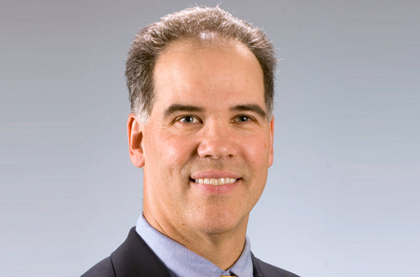
Charles MacLean, M.D. (Photo: COM Design & Photography)
A pharmacist who works within a primary care practice can improve the safety and effectiveness of patient prescriptions and save healthcare costs, University of Vermont medical researchers told federal lawmakers last month during a congressional briefing.
Amanda Kennedy, Pharm.D., UVM associate professor of medicine, and Charles MacLean, M.D., UVM professor of medicine and associate dean for primary care, made their presentation to roughly 25 congressional staffers on May 18 in relation to a bill called the “Better Care, Lower Cost Act.” Sponsored by U.S. Representatives Peter Welch (D-Vt.) and Erik Paulsen (R-Minn.), the legislation would establish an integrated care program for chronically ill Medicare patients, emphasizing a team approach and use of health technology to improve quality and cost-efficiency.
A major expense for patients with chronic conditions comes from prescriptions. The investment to integrate a pharmacist into a primary care practice is offset by the savings that come from better analysis of a patient’s medication needs, MacLean and Kennedy says.
Most people see their pharmacists at the drugstore or at a clinic-based dispensary, spending at most a few minutes discussing their prescriptions. In-house pharmacists can sit down with patients, look at the list of drugs they are taking and consult with their physicians down the hall. That helps avoid excessive drug use and medical complications from improper dosage or drug interactions, MacLean and Kennedy explained during an interview after their return from Washington.
“We can spend 20 to 30 minutes talking about your medication list and what works best for you,” Kennedy says.
The congressional briefing, titled “Getting the Medications Right: An essential ingredient in achieving the goals of H.R. 4878,” stemmed from a two-year pilot study that MacLean and Kennedy conducted with Vermont Health Commissioner Harry Chen, M.D., which was supported by a state grant.
For the study, which took place between 2012 and 2014, a pharmacist spent one day per week at one of five primary care practices in Vermont. The pharmacists came from hospitals, a retail store, a federally-funded healthcare center and an academic environment.
Working directly with patients, the pharmacists identified 708 drug therapy problems and typically stopped medications or corrected dosages. For every $1 spent on their “co-location” in the practice, they saved $2.11, the study found.
Vermont is ahead of other states in developing the concept of the “medical home” – the effort to bring more caregivers, such as nurse practitioners and mental health providers, under the umbrella of the traditional primary care practice. “Very few, if any, have highlighted the role that pharmacists play on that team,” MacLean says.
Co-location enables better communication between the doctors and pharmacists when they have a question or a problem, Kennedy says. “I don’t have to pick up the phone. I don’t have to leave a message.”
Doctors and pharmacists can go to lunch or chat in the hallway, staying up-to-date on new drug options and regulatory changes. “That informal communication is highly valuable,” MacLean says. “You get to know one another better, and you can just run through ideas with one another.”
Within a primary practice, the pharmacist can not only treat individual patients but also take a “population view” – reviewing data for a class of drugs and all the people taking it to find safety or efficacy problems or evidence of abuse, as with opioid addiction.
MacLean and Kennedy made their congressional presentation along with a team of colleagues from Minnesota. They don’t expect the bill to reach a vote this year, they said, but welcomed the opportunity to educate policy-makers on the value of pharmacists.